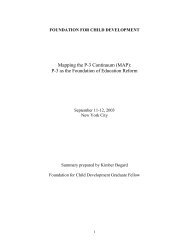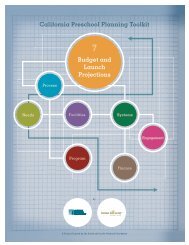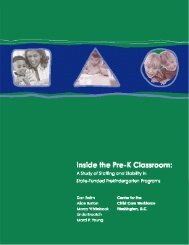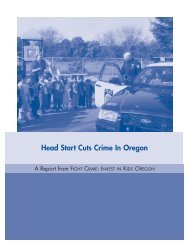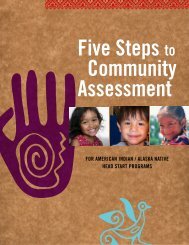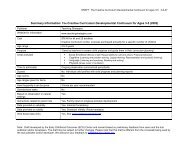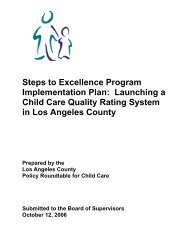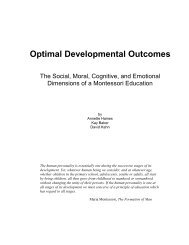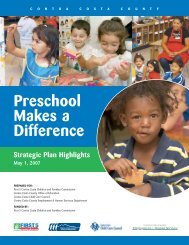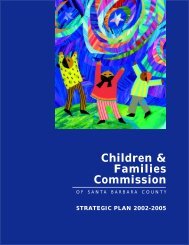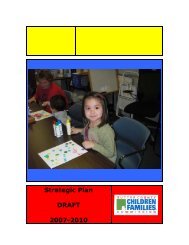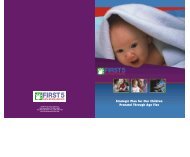Download this file - Plan4Preschool
Download this file - Plan4Preschool
Download this file - Plan4Preschool
You also want an ePaper? Increase the reach of your titles
YUMPU automatically turns print PDFs into web optimized ePapers that Google loves.
available, the After School Partnerships Office releases a Request for Applications and<br />
supportive materials, which are posted on the CDE Web site.<br />
The CDE administers the following after-school programs. Funding source and<br />
associated California Education Code (EC) authority are also noted.<br />
• After School Education and Safety (ASES) Program (state-funded, defined <br />
through EC sections 8482—8494.6) <br />
• 21st Century Community Learning Centers (21st CCLC) Program for grades<br />
kindergarten through middle school (federally funded, defined through EC sections<br />
8484.7—8484.8 and Title 20 U.S. Code sections 7171—7176)<br />
• 21st Century High School After School Safety and Enrichment for Teens<br />
(ASSETs) Program (federally funded, defined through EC sections 8420—8428,<br />
8484.8[h] and Title 20 U.S. Code sections 7171—7176).<br />
After School Education and Safety Program<br />
The state-funded after school program, established in 1998, was renamed ASES<br />
effective with the passage of the After School Education and Safety Act of 2002<br />
(Proposition 49). The passage of Senate Bill 638 in the fall of 2006 triggered the<br />
implementation of Proposition 49, increasing ASES funding from $121 million to $550<br />
million and establishing a continuous appropriation. Every public elementary,<br />
middle/junior high school, and charter school in California serving students in<br />
kindergarten and grades one through nine is eligible for ASES program funding. ASES<br />
programs are planned through a collaborative process that includes parents, youth, and<br />
representatives of participating public schools; governmental agencies, such as city and<br />
county parks and recreation departments; local law enforcement; community<br />
organizations; and the private sector. ASES programs are funded according to a<br />
renewable three-year grant cycle.<br />
21st Century Community Learning Centers Program<br />
The No Child Left Behind (NCLB) Act of 2001, signed into law on January 8, 2002,<br />
authorizes the CDE to administer the California 21st CCLC Program (NCLB Act, Title<br />
IV, Part B). California’s 21st CCLC Program parallels the program design of the state<br />
ASES Program. One key difference is that the California 21st CCLC Program provides<br />
funding in five one-year grants with expectations for local sustainability. The 21st CCLC<br />
Program serves students in kindergarten through grade twelve. The 21st CCLC funding<br />
primarily serves students who attend schools eligible for Title I schoolwide programs or<br />
schools that serve a high percentage of students from low-income families. Priority is<br />
given to schools designated as in need of improvement.<br />
Eligible 21st CCLC grant applicants include LEAs, cities, counties, community-based<br />
organizations, and other public or private entities (which may include faith-based<br />
organizations); or a consortium of such entities, agencies, or organizations. NCLB<br />
requires all after school programs to implement research-based strategies to assist<br />
70



